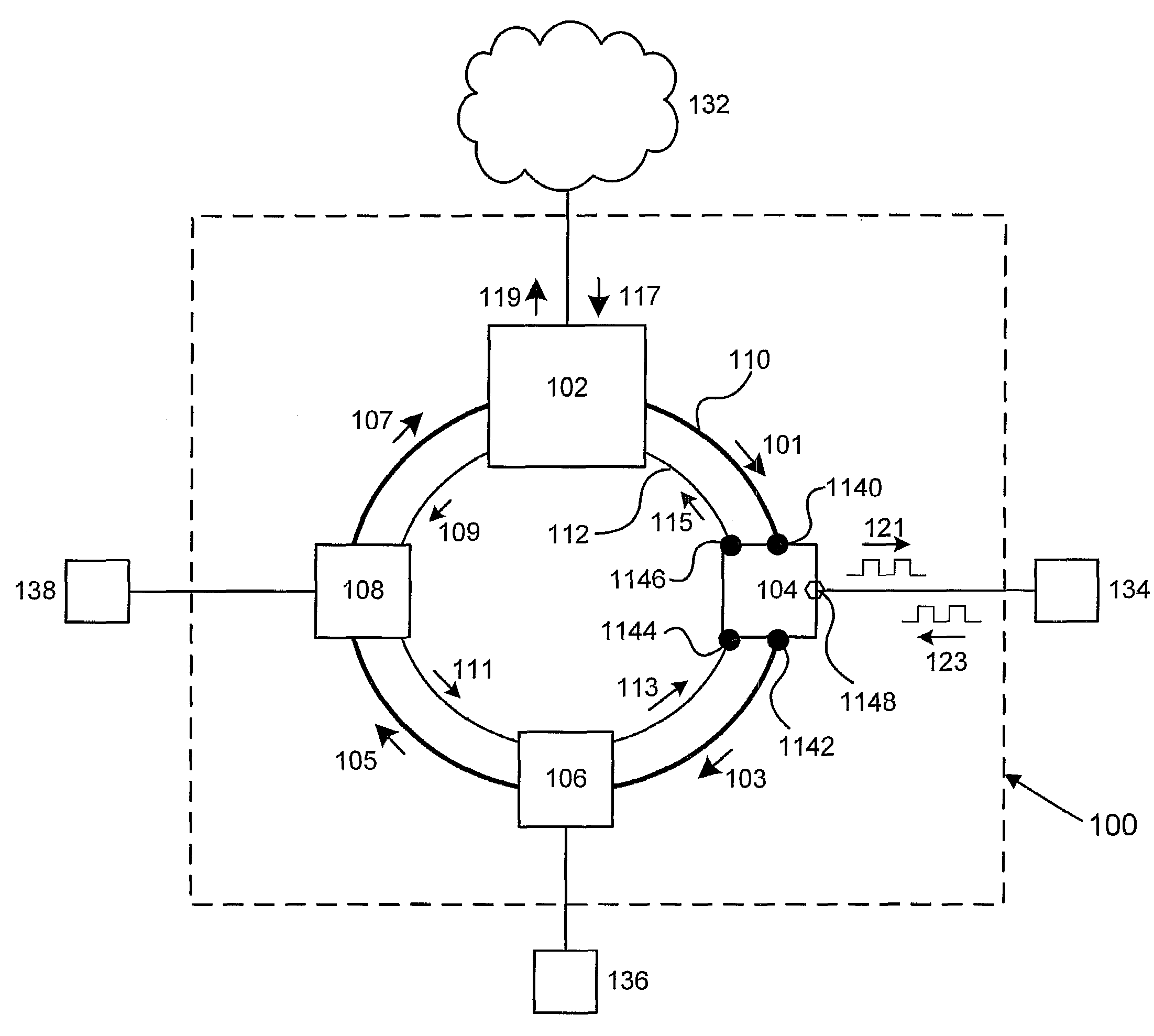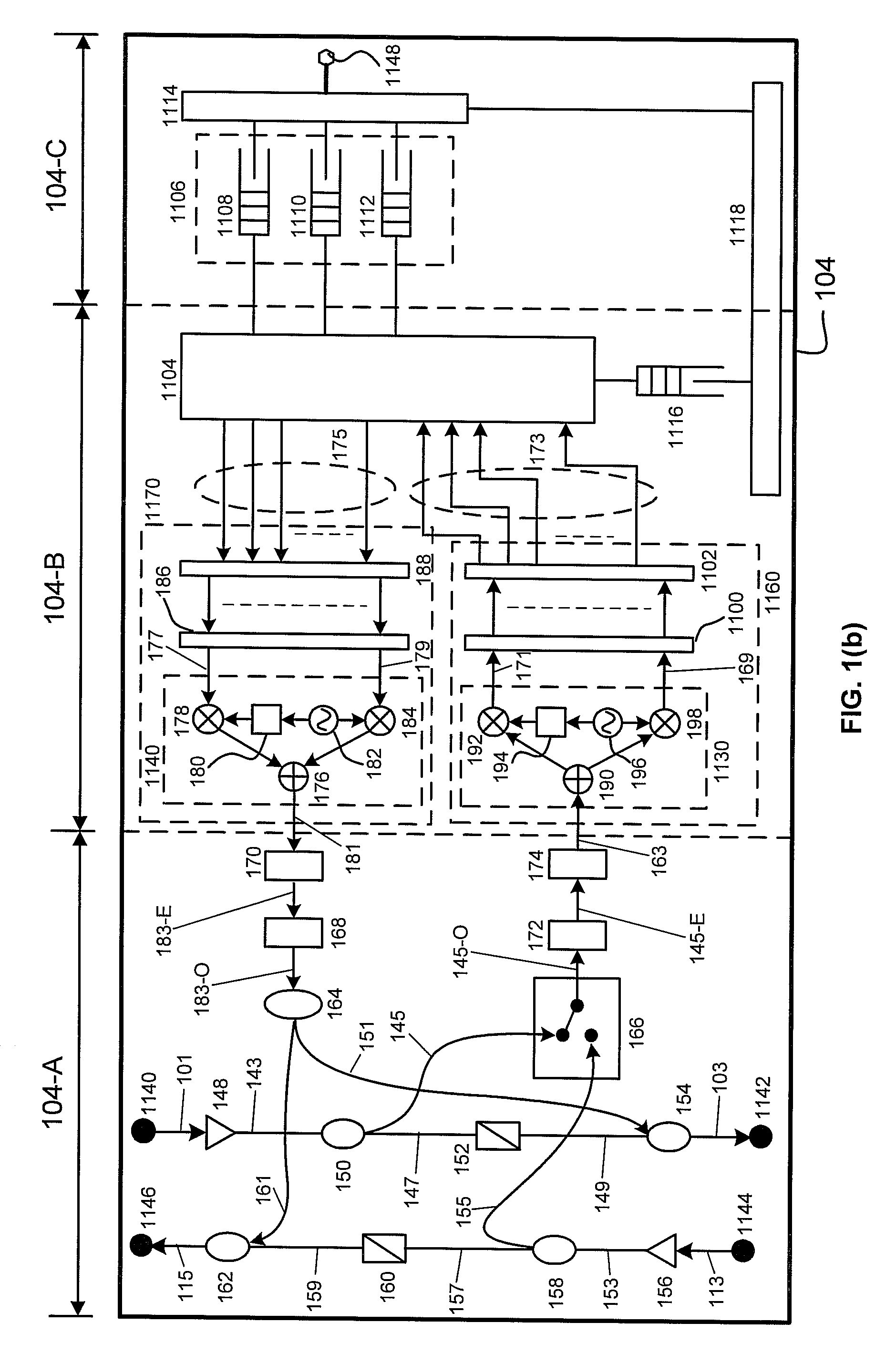Orthogonal Frequency Division Multiple Access Based Optical Ring Network
a technology of optical ring network and orthogonal frequency division, applied in the field of optical transmission network, can solve problems such as undefined architectures
- Summary
- Abstract
- Description
- Claims
- Application Information
AI Technical Summary
Benefits of technology
Problems solved by technology
Method used
Image
Examples
Embodiment Construction
[0010]FIG. 1(a) shows a high-level schematic of an optical transmission (transport) network OTN 100. In an embodiment, OTN 100 may have a single-ring architecture. In the embodiment shown in FIG. 1(a), OTN 100 has a dual-ring architecture, which increases network reliability. Examples of applications in which OTN 100 may be deployed include metropolitan access networks and fiber-to-the-premises networks. In the embodiment shown in FIG. 1(a), OTN 100 includes a single hub node HN 102 and three local nodes, LN1104-LN3108, which are connected by fiber rings FR 110 and FR 112. In general, there may be multiple local nodes. Herein, a local node is also referred to as an access node and as a local access node.
[0011]The two fiber rings form a unidirectional path switched ring (UPSR) network. FR 110 and FR 112 are configured as counter-rotating rings. Working traffic flows clockwise in FR 110, which is referred to as the working ring. Working traffic refers to data streams transported under...
PUM
 Login to View More
Login to View More Abstract
Description
Claims
Application Information
 Login to View More
Login to View More - R&D
- Intellectual Property
- Life Sciences
- Materials
- Tech Scout
- Unparalleled Data Quality
- Higher Quality Content
- 60% Fewer Hallucinations
Browse by: Latest US Patents, China's latest patents, Technical Efficacy Thesaurus, Application Domain, Technology Topic, Popular Technical Reports.
© 2025 PatSnap. All rights reserved.Legal|Privacy policy|Modern Slavery Act Transparency Statement|Sitemap|About US| Contact US: help@patsnap.com



